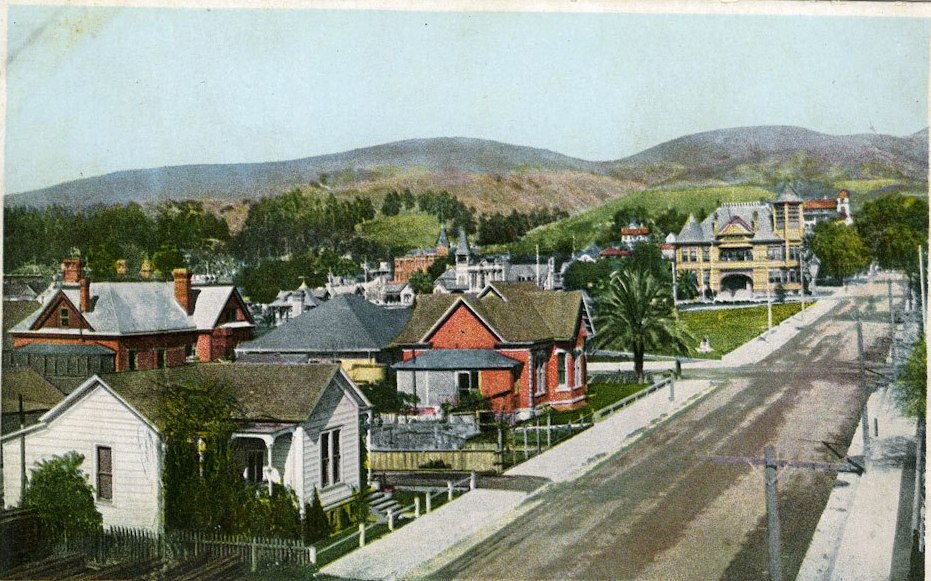By Ventura City staff
As we count down to April 2, 2016 – the date we became a city 150 years ago – we as residents can be proud of the many cultures and peoples who have enriched our city as they made Ventura their home – from the indigenous Chumash Native Americans to the waves of Spanish, Mexican, Chinese, European and new immigrants from other states and nations.
The Chumash provincial capital Shisholop – near the Ventura River mouth – governed a region larger than today’s City of Ventura, from the Rincon and Casitas Pass to the Santa Clara River and Saticoy.
Shisholop – meaning “port on the coast” according to Cruzeño Chumash consultant Fernando Librado Kitsepawit – supervised a lucrative trade with the Channel Islands and other regional mainland provinces, maintained sociopolitical stability among its many communities and directed a calendar of seasonal and cosmological cycles and events. The Chumash were fine artisans and adept traders traveling by tomols or canoes.
European voyagers Juán Rodrigues Cabrillo (1542), Sebastián Viscaíño (1602), Gaspar de Portolá (1769) and Juán Bautista de Anza (1776) briefly visited this influential village by land or sea until Chumash residents became subject to foreign colonization in 1782 with the founding of Mission San Buenaventura.
Saint Serra (1713-1784) founded his ninth and final mission in Ventura, part of a network of 21 Spanish missions in California from San Diego to Fairfield. The monk was originally called Friar Junipero – his name means “juniper bush” or metaphorically “evergreen.” A philosophy professor from the island of Majorca (Spain) turned missionary, he left a complex and controversial legacy in our state.
The Franciscans named their California missions – and the cities that grew alongside them – after saints from their order in the Roman Catholic Church. Serra named the final mission he lived to see established before his death San Buenaventura or Saint Bonaventure, after a mystic priest who wrote a famous meditative book called Itinerarium Mentis ad Deum or “The Mind’s Road to God.” The city’s official name, deemed too long to write out completely on railroad schedules was shortened by half to become “Ventura” – and this nickname has remained in common use today.
Mission San Buenaventura soon became a thriving hub of orchards and gardens watered by a seven-mile aqueduct and the largest ranching operation in California with 10,000 head of cattle and harvesting 9,000 bushels of grain annually. By the 1860s a town had grown around it and Main Street boasted a boardwalk, four stores and six to eight rum shops and restaurants.
Ventura city and county government began in and above a liquor establishment. When our first mayor, Walter Chaffee, wanted to convene a City Council meeting, he had only to leave his general store, cross the street and climb the stairs above Spears Saloon – where Capriccio’s Restaurant is located today – to the first offices of Ventura City Hall and, in 1873, the first Ventura County Courthouse.
Then as now, the City of San Buenaventura was a bilingual community. Our second mayor – saloonkeeper Angel Escandon – was Latino. Half the sindicos or council members spoke Spanish as their first language and the other half spoke English. The minutes of the first meetings – kept today between leather boards in the archives of the City Clerk’s office – are written in Spanish in the beautiful cursive handwriting of the day.
That first year of government, Ventura’s staff of five spent a budget of $7,465 – for which residents paid an annual tax of one dollar per head. Council actions that first year included building a public well for $50 – for which water users paid 25 cents per month – and paving Main Street – then called Camino Real – to the river.
The City of Ventura charged 24 cents per head to check cattle brands during slaughter to prevent cattle rustling, and an entertainment tax of $2 per billiard table. By fine or 10 days in jail, the City government outlawed cattle driving, horse racing and bull fighting on or near Main Street [$100 fine], limited milking on the main roads to one cow per family [$25 fine] and forbade concealed weapons within city limits [$100 fine].
Our city grew rapidly with the establishment of Ventura County, carved from Santa Barbara County in 1873, after an oil boom and “big agriculture” operations such as the 2,300-acre Dixie Thompson Rancho of lima beans, orchards and cattle. These ventures, along with major businesses such as the Hobson Brothers Meat Packing Company (the site of today’s Patagonia) brought immigrants, wealth, bridges and roadways to the city, transforming our city’s downtown from 1910 to 1930 into an eclectic architectural mix of red brick storefronts, terra cotta “Beaux-Arts” banks, Victorian-style homes, a Moorish-influenced Bard Hospital and Spanish Revival Ventura Theatre – all crowned by a magnificent new Ventura County Courthouse (today’s City Hall) in 1913.

